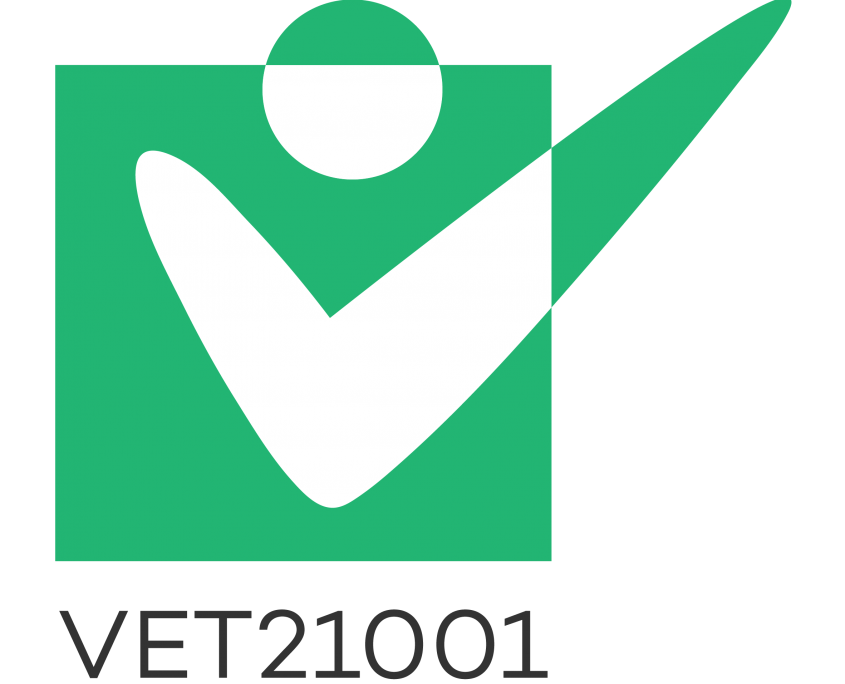Partnerships & Providers
Partnerships with external entities are a smart way educational organizations have to overcome competence gaps, reinforce their capabilities, respond timely to customer requirements.
But while outsourcing processes, products and services is a management tool capable of mitigating several operational risks, it also brings challenges to assure the quality of what is provided externally.
Aware of both these opportunities and challenges, EQAVET and ISO 21001 contain requirements for the establishment of partnerships and how to control them. ISO 21001 is particularly detailed regarding criteria to select, evaluate and re-evaluate external providers and to verify and accept their provisions.
Note: The term “provider” is used with different meanings by EQAVET and ISO 21001. EQAVET uses it to refer to the educational organizations – the VET provider – and ISO 21001 uses it to refer to external partners to the educational organization, who provides them with products, services or processes to incorporate in the educational services offered.
Criteria
EQAVET
| 1.6. Providers plan cooperative initiatives with relevant stakeholders |
| 2.2. Relevant and inclusive partnerships, including those between teachers and trainers, are explicitly supported to implement the actions planned |
ISO 21001
| 7.1.1.2 |
| 7.1.6 Organizational knowledge |
| 8.4 Control of externally provided processes, products and services |
VET21001 Tools
Template to Control External Providers
The template to control external providers tabulates the detailed requirements contained in ISO 21001 – as these are more detailed than EQAVET ‘s – to identify, select and evaluate/re-evaluate external providers, as well as to verify the fitness for purpose of the products/services they provide so a decision regarding its acceptance can be made.
The template contains fields to first organize the products and services provided by external providers in categories, as typically, external providers of the same “family” which provide products and services of the same nature, share criteria. Therefore, starting by doing this organization enables a more efficient evaluation process, as criteria can be determined per category, saving substantial time and effort, particularly to educational organizations that depend on many external providers.
The template also contains fields to identify the associated process of the management system or, in other words, the process that will receive the externally provided product or service – which will also be identified in the template – as an input.
Depending on the nature of the product or service externally provided, there might be a risk of counterfeiting and this should also be identified in the template, together with the measures deployed to control this risk. Also depending of the nature of the product or service externally provided, its impact in the quality of the products and services provided by the educational organization to their learners and other beneficiaries varies and should be identified in the template as high, low or negligible impact. High impact requires the definition of stronger criteria to control the external providers and the products and services they provide than low impact. Negligible impact doesn’t justify the effort necessary to implement systematic control external and these can therefore be skipped.
The template proceeds with fields to identify the external provider under evaluation and the criteria defined to select them and to periodically evaluate their performance after being selected. It also contains fields to define the criteria needed to verify the products and services when they are delivered and to decide on its acceptance.
The template finalizes with a section to identify the qualification status of each external provider and to add any relevant comments to that status
Download this tool in editable format
Download an example of the use of this tool
Download another example of the use of this tool
Template for Suplier Evaluation Chart
Supplier evaluation is a term used by organizations to evaluate and approve their existing and potential suppliers through a series of assessments. This evaluation consists of a series of questions based on parameters like competency, capacity, consistency, quality, etc., with a view to assessing the suppliers to ensure an approved portfolio via the application of Supplier Evaluation Tools.
Evaluating suppliers can be challenging, hence, the best practice is to create an evaluation form that will help organize and evaluate the suppliers more efficiently. This evaluation form is essential in order to monitor and measure the supplier’s performance to reduce the cost associated with the activities, analyze risk management and maintain scope for constant improvement in selecting the suppliers.
The Carter 10Cs model that is recognized worldwide, and on which this tool is based, looks into the aspects of evaluating the supplier before being appointed. The 10 Cs are listed below:
- Capacity – Does the supplier have the bandwidth to deliver?
- Competency – Is the supplier diligent and can complete the task in a given period of time?
- Consistency – Is there a consistent output from the supplier?
- Control of process – Does the supplier offer flexibility and have systematic control over process?
- Commitment to Quality – Is there a system established by the supplier that works constantly for quality management checks?
- Cash – Is the supplier financially independent or is there third party involvement?
- Cost – Are the products and services offered by the supplier cost-effective?
- Culture – Does the supplier have a good work culture and market reputation?
- Clean – Does the supplier have a legitimate license, does not favor uncertified professionals and is risk management certified?
- Communication efficiency – Does the supplier have the latest means of communication to answer queries?
Based on these important parameters, the supplier organization can be asked to furnish all the details right after the screening process is completed.
The supplier Evaluation Form will equip any organization with the capacity to easily identify the correct suppliers for a specific need. Evaluating suppliers will provide organizations with the peace of mind that they are ordering from a reputable source, and that therefore risks will be minimized. Moreover, the records and assessments done for suppliers following each service, will provide a clear picture of the supplier’s consistency, thus providing organizations with the information needed on whether the supplier can be considered as an Approved Supplier. The questions asked in the evaluation form help organizations come to a solid conclusion whether or not the supplier should be appointed or re-appointed in the future.
Other benefits of having an evaluation form ready for supplier evaluation include:
- 1. Helps in assessing any risk involved: If an organization is not aware of the supplier, getting an assessment done prior to ordering will help the organization know their supplier and they can assess any risk associated with appointing them. Moreover, if the same supplier is appointed multiple times, and their evaluation is always positive, it will grand further confidence to the organization that the risks are mitigated even further. As Carter 10Cs model suggests, risk management can be associated with capacity, competence and commitment to quality.
- Helps in protecting the brand reputation: Through these evaluation forms, organizations can appoint suppliers with a good market reputation and, in turn, minimize any risk associated with tampering their brand reputation. Carter’s 10Cs model suggests, brand reputation can be associated with control of the process, clean (has a legal license) and culture.
- Helps in stimulating the cost factor: There are various cost factors associated with appointing suppliers. A huge sum of money is invested by organizations during the selection process. By having a systematic evaluation form, organizations can understand the overall ability of the suppliers to fulfill the organization’s expectations and requirements. Similarly keeping such records for all suppliers may save the organization money in the future, given that the organization may opt to appoint a previously evaluated supplier thus saving itself any additional evaluation costs. Associating with Carter’s 10Cs, the cost factor is in tandem with cost and monetary competence.
Download this tool in editable format
Download an example of the use of this tool
Download another example of the use of this tool


